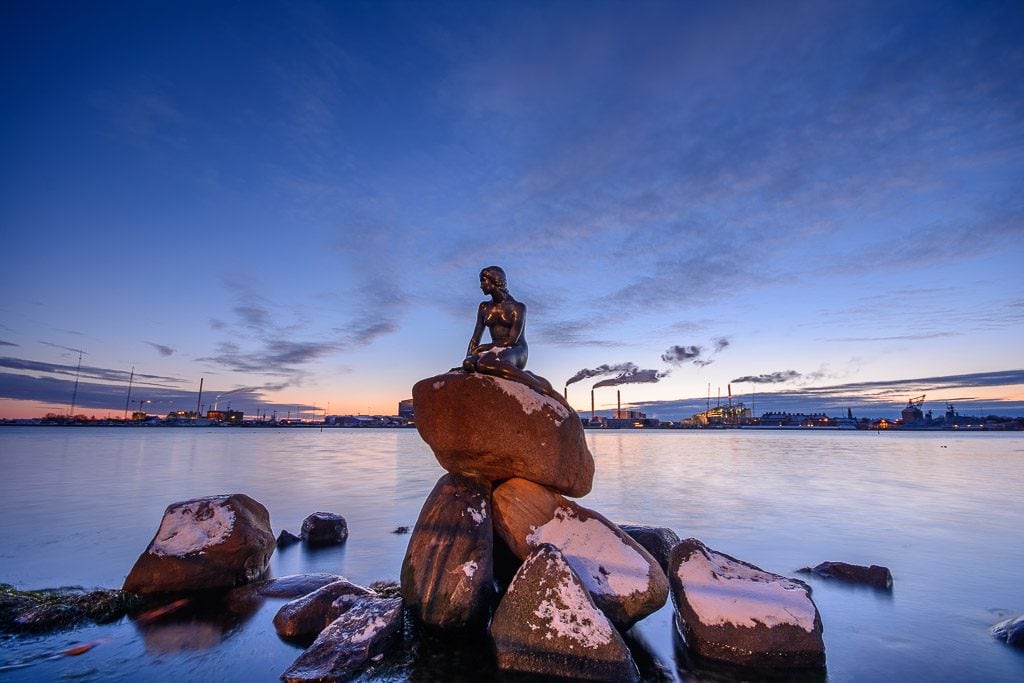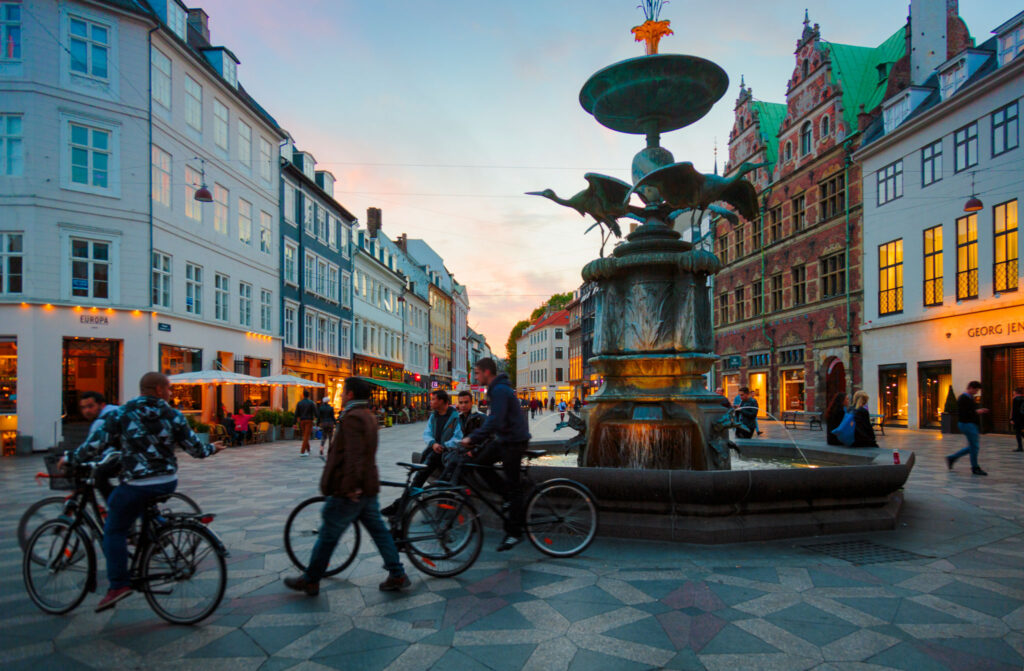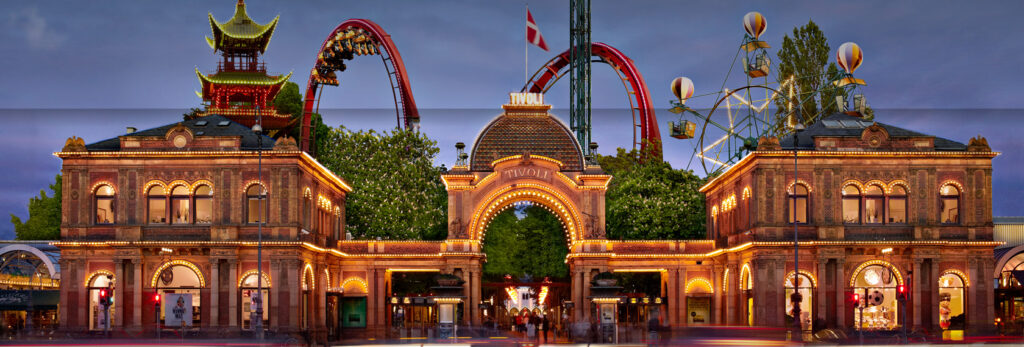Copenhagen is the capital and most populous city of Denmark. Copenhagen is situated on the eastern coast of the island of Zealand; another portion of the city is located on Amager, and it is separated from Malmö, Sweden, by the strait of Øresund. The Øresund Bridge connects the two cities by rail and road.
Originally a Viking fishing village established in the 10th century in the vicinity of what is now Gammel Strand, Copenhagen became the capital of Denmark in the early 15th century. The city flourished as the cultural and economic center of Scandinavia under the union for well over 120 years, starting in the 15th century up until the beginning of the 16th century when the union was dissolved with Sweden leaving the union through a rebellion.
Since the turn of the 21st century, Copenhagen has seen strong urban and cultural development, facilitated by investment in its institutions and infrastructure. The city is the cultural, economic and governmental centre of Denmark; it is one of the major financial centres of Northern Europe with the Copenhagen Stock Exchange.
Copenhagen is home to the University of Copenhagen, the Technical University of Denmark, Copenhagen Business School and the IT University of Copenhagen. The University of Copenhagen, founded in 1479, is the oldest university in Denmark. Copenhagen is home to the FC København and Brøndby football clubs. The annual Copenhagen Marathon was established in 1980. Copenhagen is one of the most bicycle-friendly cities in the world.
The Copenhagen Metro, launched in 2002, serves central Copenhagen. Additionally, the Copenhagen S-train, the Lokaltog (private railway), and the Coast Line network serve and connect central Copenhagen to outlying boroughs. Serving roughly two million passengers a month, Copenhagen Airport, Kastrup, is the busiest airport in the Nordic countries.
| Country | |
|---|---|
| City | Copenhagen |
| Seat | Copenhagen City Hall |
| Districts | Districts |
| Government | |
| • Type | City council |
| • Body | Copenhagen City Council |
| • Lord Mayor | Lars Weiss (Social Democrats) |
| Area | |
| • Total | 86.4 km (33.4 sq mi) |
| Population (1 April 2020) | |
| • Total | 633,449 |
| • Estimate (October 2016) | 601,448 |
| • Density | 7,300/km (19,000/sq mi) |
| Time zone | UTC+1 (CET) |
| • Summer (DST) | UTC+2 (CEST) |
| Postal code | 1000-2500 |
| Municipal code | 101 |
Beaches
Amager Strandpark, which opened in 2005, is a 2 km (1 mi) long artificial island, with a total of 4.6 km (2.9 mi) of beaches. It is located just 15 minutes by bicycle or a few minutes by metro from the city centre. In Klampenborg, about 10 kilometers from downtown Copenhagen, is Bellevue Beach. It is 700 metres (2,300 ft) long and has both lifeguards and freshwater showers on the beach.
The beaches are supplemented by a system of Harbour Baths along the Copenhagen waterfront. The first and most popular of these is located at Islands Brygge and has won international acclaim for its design.
Climate
Copenhagen is in the oceanic climate zone (Köppen: Cfb). Apart from slightly higher rainfall from July to September, precipitation is moderate. While snowfall occurs mainly from late December to early March, there can also be rain, with average temperatures around the freezing point.
June is the sunniest month of the year with an average of about eight hours of sunshine a day. July is the warmest month with an average daytime high of 21 °C. In the spring, it gets warmer again with four to six hours of sunshine per day from March to May. February is the driest month of the year.

Economy
Copenhagen is the major economic and financial centre of Denmark. The city’s economy is based largely on services and commerce.
Several financial institutions and banks have headquarters in Copenhagen, including Alm. Brand, Danske Bank, Nykredit and Nordea Bank Danmark. The Copenhagen Stock Exchange (CSE) was founded in 1620 and is now owned by Nasdaq, Inc.. Copenhagen is also home to a number of international companies including A.P. Møller-Mærsk, Novo Nordisk, Carlsberg and Novozymes.
City authorities have encouraged the development of business clusters in several innovative sectors, which include information technology, biotechnology, pharmaceuticals, clean technology and smart city solutions.
Shipping is another import sector with Maersk, the world’s largest shipping company, having their world headquarters in Copenhagen. The city has an industrial harbour, Copenhagen Port.
Copenhagen has some of the highest gross wages in the world. It is however also among the most expensive cities in Europe.
Tourism
Tourism is a major contributor to Copenhagen’s economy, attracting visitors due to the city’s harbour, cultural attractions and award-winning restaurants. Since 2009, Copenhagen has been one of the fastest growing metropolitan destinations in Europe.
Hotel capacity in the city is growing significantly. From 2009 to 2013, it experienced a 42% growth in international bed nights (total number of nights spent by tourists), tallying a rise of nearly 70% for Chinese visitors.

Parks, gardens and zoo
Copenhagen is a green city with many parks, both large and small. King’s Garden (Kongens Have), the garden of Rosenborg Castle, is the oldest and most frequented of them all. Also located in the city centre are the Botanical Gardens noted for their large complex of 19th-century greenhouses donated by Carlsberg founder J. C. Jacobsen. Fælledparken at 58 ha (140 acres) is the largest park in Copenhagen.
It is popular for sports fixtures and hosts several annual events including a free opera concert at the opening of the opera season, other open-air concerts, carnival and Labour Day celebrations, and the Copenhagen Historic Grand Prix, a race for antique cars.
Another popular park is the Frederiksberg Gardens, a 32-hectare romantic landscape park. It houses a colony of tame grey herons and other waterfowl. The park offers views of the elephants and the elephant house designed by world-famous British architect Norman Foster of the adjacent Copenhagen Zoo. Langelinie, a park and promenade along the inner Øresund coast, is home to one of Copenhagen’s most-visited tourist attractions, the Little Mermaid statue.
It is official municipal policy in Copenhagen that by 2015 all citizens must be able to reach a park or beach on foot in less than 15 minutes.
Culture
Apart from being the national capital, Copenhagen also serves as the cultural hub of Denmark and wider Scandinavia. Copenhagen Fashion Week, the largest fashion event in Northern Europe, takes place every year in February and August.
Museums
Copenhagen has a wide array of museums of international standing. The National Museum, Nationalmuseet, is Denmark’s largest museum of archaeology and cultural history, comprising the histories of Danish and foreign cultures alike. Denmark’s National Gallery (Statens Museum for Kunst) is the national art museum with collections dating from the 12th century to the present. In addition to Danish painters, artists represented in the collections include Rubens, Rembrandt, Picasso, Braque, Léger, Matisse, Emil Nolde, Olafur Eliasson, Elmgreen and Dragset, Superflex and Jens Haaning.
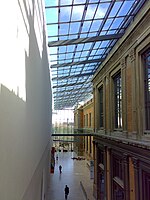
Another important Copenhagen art museum is the Ny Carlsberg Glyptotek founded by second generation Carlsberg philanthropist Carl Jacobsen and built around his personal collections. Its main focus is classical Egyptian, Roman and Greek sculptures and antiquities and a collection of Rodin sculptures, the largest outside France.
Louisiana is a Museum of Modern Art situated on the coast just north of Copenhagen. It is located in the middle of a sculpture garden on a cliff overlooking Øresund. Its collection of over 3,000 items includes works by Picasso, Giacometti and Dubuffet. The Danish Design Museum is housed in the 18th-century former Frederiks Hospital and displays Danish design as well as international design and crafts.
Other museums include: the Thorvaldsens Museum, dedicated to the oeuvre of romantic Danish sculptor Bertel Thorvaldsen who lived and worked in Rome; the Cisternerne museum, an exhibition space for contemporary art, located in former cisterns that come complete with stalactites formed by the changing water levels; and the Ordrupgaard Museum, located just north of Copenhagen, which features 19th-century French and Danish art and is noted for its works by Paul Gauguin.
Cuisine
Noma is an example of Copenhagen’s renowned experimental restaurants, and has gained two Michelin stars. As of 2014, Copenhagen has 15 Michelin-starred restaurants, the most of any Scandinavian city. The city is increasingly recognized internationally as a gourmet destination.
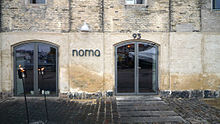
Danish pastry can be sampled from any of numerous bakeries found in all parts of the city. The Copenhagen Baker’s Association dates back to the 1290s and Denmark’s oldest confectioner’s shop still operating, Conditori La Glace, was founded in 1870 in Skoubogade by Nicolaus Henningsen, a trained master baker from Flensburg.
Copenhagen has long been associated with beer. Carlsberg beer has been brewed at the brewery’s premises on the border between the Vesterbro and Valby districts since 1847 and has long been almost synonymous with Danish beer production. However, recent years have seen an explosive growth in the number of microbreweries so that Denmark today has more than 100 breweries, many of which are located in Copenhagen. Some like Nørrebro Bryghus also act as brewpubs where it is also possible to eat on the premises.
Nightlife and festivals
Copenhagen has one of the highest number of restaurants and bars per capita in the world. The nightclubs and bars stay open until 5 or 6 in the morning, some even longer. Inner city areas such as Istedgade and Enghave Plads in Vesterbro, Sankt Hans Torv in Nørrebro and certain places in Frederiksberg are especially noted for their nightlife. Notable nightclubs include Bakken Kbh, ARCH (previously ZEN), Jolene, The Jane, Chateau Motel, KB3, At Dolores (previously Sunday Club), Rust, Vega Nightclub, Culture Box and Gefährlich, which also serves as a bar, café, restaurant, and art gallery.
Copenhagen has several recurring community festivals, mainly in the summer. Copenhagen Carnival has taken place every year since 1982 during the Whitsun Holiday in Fælledparken and around the city with the participation of 120 bands, 2,000 dancers and 100,000 spectators.
Copenhagen Pride is a gay pride festival taking place every year in August. The Pride has a series of different activities all over Copenhagen, but it is at the City Hall Square that most of the celebration takes place.

